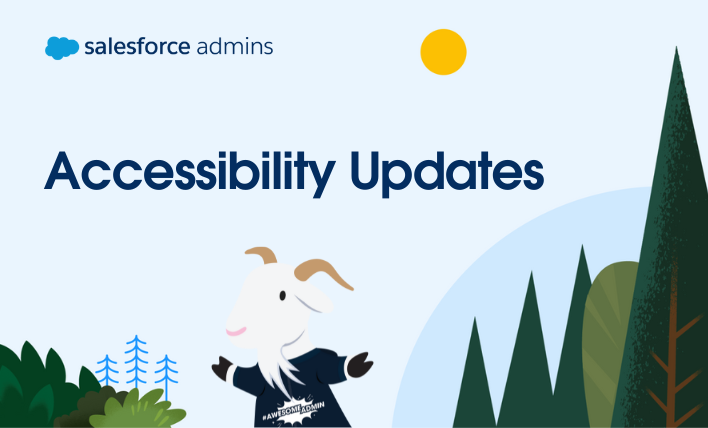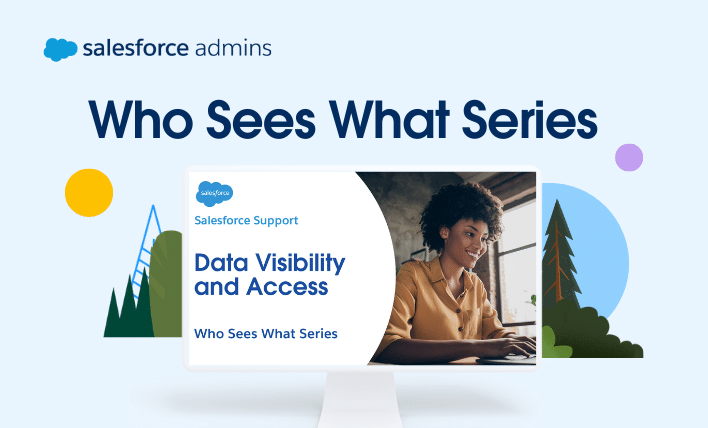As a Salesforce Admin you are the leaders that bring your company into the future. At Salesforce our Salesforce Admins are always looking to keep us as productive as possible while using the latest technology. When we announced Lightning in the Winter ’16 release our Salesforce Admins started a plan to roll out Lightning successfully to our entire organization. They knew that this would be a journey and not just a flip of a switch, so they planned accordingly and gathered lots of feedback to ensure success.
To help you be successful in your Lightning rollout we want to share with you the best practices and 7 key points our Salesforce Admins used to launch Lightning at Salesforce.
1) Communication is the center for success
Early and often our Salesforce Admins utilized many communication channels to keep everyone up to date on the Lightning migration. Prior to the rollout there was a lot of communication about the plan, its objective and the timeline. And, the communications were months in advance of any changes.
A good rule to follow is to publish communication to at least 3 channels to ensure that it’s read by everyone at least once. Below are the two main forms of communication they used.
- Chatter group: Early in the process our team set up a Chatter group so that any employee could ask questions and communicate with the team. The Chatter group also allowed them to post links to key documents, walk thrus, and timelines.
- Email Updates: Regular status updates from the Salesforce Admin team also dropped in our inboxes. This assured that if you weren’t a member of the Chatter group you could still stay up to date with the project.
In addition to these channels, you will want to look at other forms of communication that are often used by your organization such as an internal posting site, newsletters, etc. The key is to over communicate everything so that no one feels left out. If your organization has an internal communications person work with them to be included on messaging sent out to your users.
2) Analysis is your first step
Before making any decision the Salesforce Admin team looked at our population of users, features they were using, and features that were Lightning ready. It’s easy to turn Lightning on, but understanding the impact to users and which users could benefit most based on features and functionality was the first step in the analysis.
Taking a step back and looking at users by profile helped determine who to invite into an early adopter group. Think about how you can group your users in addition to profile. One suggestion is to group them as light, intermediate, and heavy users.
- Light users could be those individuals that log in to Salesforce and post to chatter, and maybe have read access to a few objects- like Accounts, Contacts, etc. They aren’t responsible for updating records, but because they need the information in Salesforce it serves as a reference point in their day-to-day duties.
- Intermediate users are those individuals that log in to Salesforce and in addition to everything a light user does, they also update records and are responsible for standard objects.
- Heavy users are those individuals whose day-to-day relies on Salesforce. They create and edit records regularly, interact with many custom objects and apps in order to do their job.
By looking at users based on their level of salesforce usage our Salesforce admins were able to assess the impact Lightning would have on them. Light users and intermediate users could be asked to join an early adopter group, heavy users could be pushed to later in the rollout.
In addition to analyzing users, our Salesforce Admin team looked at the number of lines of code in our org- such as triggers, visualforce pages, etc. This review looked at custom code and if it was Lightning ready, or changes needed to be made.
3) Early adopters help drive adoption
Following user analysis from the previous step and code review our Salesforce Admin team created a small group to be early adopters with various profiles and levels of Salesforce usage. This group was cross-functional and represented many different departments within Salesforce and included a mix of light, intermediate, and heavy users. These users received an exclusive invite to participate in the rollout of Lightning company-wide. As part of this program, they were the first users to have the Lightning experience enabled for them and got to participate in meetings with key executives and the Salesforce Admin team to provide feedback.
At the time of launch, the early adopter group was key to driving adoption, answering questions, and helping to mitigate change for users company-wide. The Salesforce Admin team told me “this group was instrumental in our successful rollout. They could answer questions from their peers and really helped us with the rollout plan”.
4) Executive participation is key
In addition to the Salesforce Admin team communicating with users, the executive team also had many frequent communications about the rollout. Executive participation in the rollout helped to drive adoption by aligning core values and principles to the rollout. In addition, the Executive communication also set goals and timelines for the rollout. This helped to get all employees on board with the project and made it feel in line with other company initiatives.
To get executive participation, our Salesforce Admin team scheduled 1:1 demos with key executives and influencers. Prior to meeting with key executives, they gathered information about the top features they used and what they wanted to see. Then they constructed a demo of the new Lightning experience highlighting those features. For more tips on d amazing demos check out our post
5 tips to rock your next Demo.
5) Notify users ahead of time of limitations
The feedback that our early adopters gave us helped with communication throughout rollout. Specifically, notifying users ahead of time about limitations. At rollout, all users were notified about limitations of Lightning- for instance- at the time, you could not customize the home page. (
This changed with Summer ’16). Users were notified of this limitation so that the Salesforce team didn’t have to spend time answering this question at rollout. Notifying users of limitations based on their role within the organization also conveyed confidence from the Salesforce Admin team to users that they had looked at the full impact of the rollout.
6) Letting users opt-out at any time
Prior to rollout and at launch all of the executive communication provided clear instructions for users to “switch back to classic”. So if at any time a user needed to switch back to classic they could. Providing these clear instructions in all user communication avoided an ‘all-or-nothing’ feel. And, it gave users the ability to jump back to an interface they were familiar with- which is key for high volume users and users that needed to access apps that weren’t yet Lightning ready.
7) Provide a Feedback Loop
At rollout, a specific chatter group was created so that users could post questions, offer tips, and provide feedback. This chatter group continues to drive Lightning adoption at Salesforce and gives users more ownership of the rollout plan.
Has your organization implemented Salesforce Lightning for your sales organization?
Tell us about it and you could win two (2) passes (total) to Dreamforce ‘16, and an opportunity to talk about your Lightning deployment in a track session! Nominate your organization at the contest registration form: http://sfdc.co/SBLreg
We are looking for Sales Cloud customers with the most innovative and effective scenarios, so tell us how you supercharged your organization with Lighting! This contest starts today and ends on Thursday, June 30, 2016, at 11:59pm PT.
More information is available on the Salesforce Customer Success Community through a Frequently Asked Questions (FAQ) document at http://sfdc.co/SBLfaq. The Salesforce Struck By Lightning Official Contest Rules are available at:http://sfdc.co/SBLrules.





